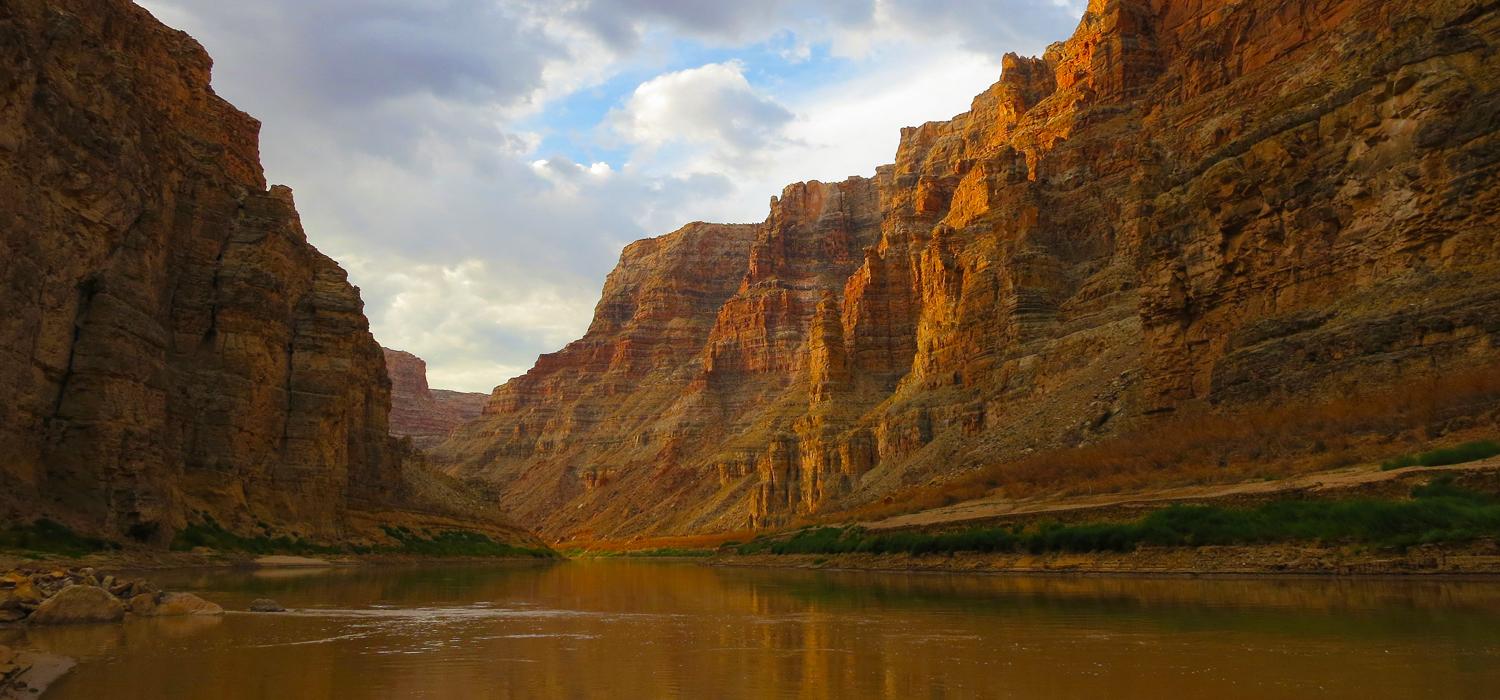
BY RICHARD INGEBRETSEN MD, PHD
Right now, discussions are taking place among Western water managers as to how to better manage Colorado River water. For anyone who follows water policy in the West, this is not a big surprise. The current system of water management is collapsing in front of our eyes. Proposals that once seemed crazy are now on the table.
One of these proposals—considered a Don Quixote, “tilting at windmill” idea a decade ago—is now a real possibility.
Two years ago, the Glen Canyon Institute commissioned and published a peer-reviewed study that showed that storing water in Lake Mead rather than in Lake Powell would yield a savings of 300,000 acre feet of water or more per year—equal to the entire state of Nevada’s annual Colorado River water allocation. While more water evaporates from Lake Mead because of its greater surface area and higher temperatures, there is a lot more seeping into the banks at Lake Powell. Lake Mead is mostly hard rock, whereas Lake Powell is porous sandstone, which allows water to trickle through into underground aquifers, never to be recovered.
This study has changed the entire discussion of water management on the Colorado River. For the first time, water managers are talking about a subject that has been taboo: moving the water stored in Lake Powell into Lake Mead. But more remarkably, they are actually listening to the environmental community. The reason for this is simple: we are offering what the water managers need—sustainability. They are in a lot of trouble. The system that they have built is unsustainable and that unsustainability is starting to rear its ugly head. Environmentalists, defined by sustainability, can help design a water system that will last, and, in so doing, restore two of the most splendid of all canyons in the world.
It’s unbelievable that beautiful Glen Canyon has served as a water storage facility for the Bureau of Reclamation for the past 50 years. The decision to dam and store water in this uniquely beautiful place was made when the West was operating in an era of apparent excess water, and, quite frankly, people did not know better. But now the West no longer has “excess” water.
Levels at Lake Powell and Lake Mead are dropping. Glen Canyon, the most priceless of all canyons of the Colorado River, has already begun to re-emerge from the water and restore itself. We are now on the verge of the day when the level of Lake Powell will be so low that the power generating stations will not be able to generate electricity. At that point, the last major argument to keep water behind the dam will evaporate.
When it comes to Glen Canyon Dam, the latest and most compelling scientific work being performed now is with power. Water produces power by turning generators at the base of dams. The higher the intake for water is above the generators, the greater the distance water will fall, thus creating more power. Soon the level of Lake Powell will be too low for water to be drawn into the intakes.
People are concerned that if water is drained from Glen Canyon, the canyon will be ruined, that sediment buildup and the white bathtub rings will have taken their toll. That is not true—the canyons do restore. And you don’t have to look very far to find examples. Travel to the upper stretches of Cataract Canyon where the river has washed out virtually all of the sediment, erased the bathtub ring, and restored 14 large rapids—all of which were once drowned under Lake Powell. Hike up the Escalante River to any one of a number of canyons where floods have brought the waterfalls, redbuds and alcoves back to their original splendor. Visit Hole in the Rock, where the pioneers wrote their names on the walls or Fort Moqui at Hite, where John Wesley Powell’s inscription will never again be underwater. Take a trip this spring, when Lake Powell will be very, very low, and explore firsthand the incredible restored canyons of Glen Canyon. One thing is certain: when the lake is gone, the Glen will restore.
Governments manage and make decisions in crisis. Well, we are in one now. Critical decisions are being made. Currently, the river is managed under an interim agreement signed by the seven basin states in 2007. This agreement is set to expire in about 10 years, and so water managers are beginning discussions on a new one. In the 1950s, when decisions were first being made to build huge dams, there was not a strong voice to protect the environment, but there is one now. We are that voice, and we need to be heard. This is our chance to make an incredible and historic difference.
We want to stop the destruction of the Grand Canyon. The most realistic and sustainable future for this area is a natural restoration of the canyons.
In Glen Canyon, much of this wondrous place, including nearly 40 miles of the Colorado River, 20 miles of the San Juan and 30 miles of the Escalante River, is free again, ready for this and future generations to enjoy. The biological heart of the Colorado Plateau is gathering national attention and a restored, free-flowing Colorado River is breathing new life into the soaring red rock canyons of the legendary Glen.
 Richard Ingebretsen is Associate Dean for the College of Science and Professor of Medicine at the University of Utah, and founder and president of Glen Canyon Institute, a non-profit organization based in Salt Lake City, Utah.
Richard Ingebretsen is Associate Dean for the College of Science and Professor of Medicine at the University of Utah, and founder and president of Glen Canyon Institute, a non-profit organization based in Salt Lake City, Utah.
EDITOR'S NOTE: The views expressed by Advocate contributors are solely their own and do not necessarily represent the views of the Grand Canyon Trust.
